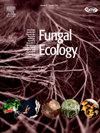Contrasting effects of chytrids on two large desmids in Lake Biwa
IF 2.2
3区 环境科学与生态学
Q3 ECOLOGY
引用次数: 0
Abstract
Chytridiomycota (chytrids) include a wide range of taxa with diverse trophic strategies, ranging from obligate parasites to saprotrophs. However, their taxonomic and functional diversity, particularly among those attached to phytoplankton, is often overlooked in field surveys given their morphological similarity. In this study, we examined the relationships between two large desmids (Micrasterias hardyi and Staurastrum dorsidentiferum) and associated chytrids in Lake Biwa. The analysis of spatiotemporal distribution revealed contrasting effects: S. dorsidentiferum's population dynamics were significantly influenced by chytrids, whereas M. hardyi remained unaffected. Single-spore DNA analysis identified both parasitic and saprotrophic chytrids on S. dorsidentiferum, but only saprotrophic chytrids on M. hardyi. Our findings indicate that chytrids attached to phytoplankton show taxonomic and functional diversity and do not always control host population dynamics. However, considering the feeding mode and substrate specificity of chytrids is important for elucidating their impact on phytoplankton dynamics and material flows in lakes.
壶菌对琵琶湖两个大池塘的影响对比
壶菌科(Chytridiomycota)包括范围广泛的分类群,具有不同的营养策略,从专性寄生虫到腐养生物。然而,由于它们形态上的相似性,在野外调查中往往忽略了它们的分类和功能多样性,特别是在浮游植物上。本文研究了琵琶湖两种大型石斛(microrasterias hardyi)和石斛(astastrum dorsidentiferum)与伴生壶菌的关系。时空分布分析揭示了两种不同的影响:壶菌对背草种群动态的影响显著,而对哈氏稻种群动态的影响不明显。单孢子DNA分析同时鉴定出了寄生壶菌和腐养壶菌,但仅鉴定出了哈氏菌腐养壶菌。本研究结果表明,依附于浮游植物的壶菌具有分类和功能多样性,并不总是控制寄主种群动态。然而,考虑壶菌的摄食方式和底物特异性对于阐明壶菌对湖泊浮游植物动态和物质流动的影响具有重要意义。
本文章由计算机程序翻译,如有差异,请以英文原文为准。
求助全文
约1分钟内获得全文
求助全文
来源期刊

Fungal Ecology
环境科学-生态学
CiteScore
5.80
自引率
3.40%
发文量
51
审稿时长
3 months
期刊介绍:
Fungal Ecology publishes investigations into all aspects of fungal ecology, including the following (not exclusive): population dynamics; adaptation; evolution; role in ecosystem functioning, nutrient cycling, decomposition, carbon allocation; ecophysiology; intra- and inter-specific mycelial interactions, fungus-plant (pathogens, mycorrhizas, lichens, endophytes), fungus-invertebrate and fungus-microbe interaction; genomics and (evolutionary) genetics; conservation and biodiversity; remote sensing; bioremediation and biodegradation; quantitative and computational aspects - modelling, indicators, complexity, informatics. The usual prerequisites for publication will be originality, clarity, and significance as relevant to a better understanding of the ecology of fungi.
 求助内容:
求助内容: 应助结果提醒方式:
应助结果提醒方式:


